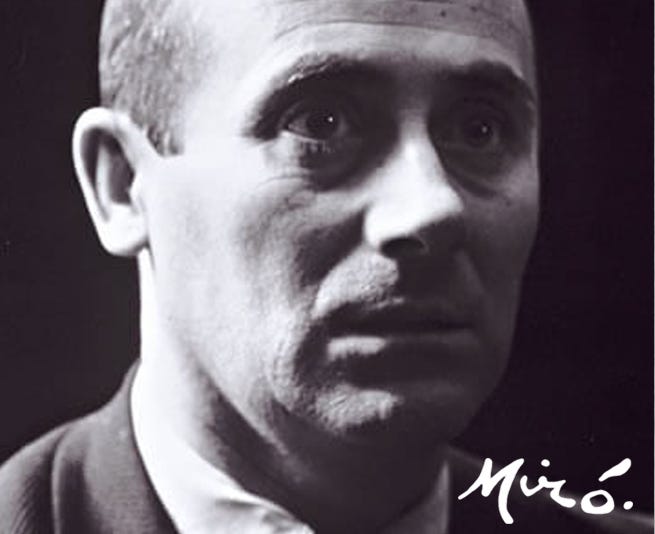Miro - Tray - Hand catching a bird (1926)


Free Shipping
on domestic orders over $100


Secure payment
Visa, Mastercard, AMEX, Paypal,
Apple Pay,Google Pay
Description
Decorative tray featuring a Surrealist painting of Joan Miró representing a hand catching a bird.
© Successió Miró Main à la poursuite d'un oiseau" (1926).
This painting remains one the most famous abstract pieces from Joan but also from the abstract era. Organic shapes to convey a lively zest of life are mixed with dreamy colors, reminiscent of a mid-summer night "dream. Representing the counterculture in the 1920 "Paris, that piece of art is full of complex techniques made to create a paradox.
Joan Punyet Miró (Miró "grandson) gave his explanation about this painting in an intimate interview: This iconic painting from the surrealist period was painted two years after the Manifesto of Surrealism written by André Breton. It features strong colors and a great simplicity: five fingers of a hand catching a bird. Blue is the color of his dreams. The strokes of paint are simplified, flattened. The silhouette is a fine perfect line, like fingers playing the piano; aerial, lightweight and mobile."
In his era, Miró was famous for feeling with his hand his models and objects he intended to paint before actually looking at them. A few experts thought that Miró tried here to represent what is impossible and subsequently surreal: catching a flying bird with your bare hands. Others said this could be a tribute to the technique he learned at the Francesc Galà Art School in Barcelona (1912-1915), where he was taught to draw after closing his eyes and touching the model.
Miró often worked with a limited palette, yet the colors he used were bold and expressive. His chromatic explorations, which emphasized the potential of fields of unblended color to respond to one another, provided inspiration for a generation of Color Field painters.
Miró was a Spanish painter that combined abstract art with Surrealist fantasy to create his lithographs, murals, tapestries, and sculptures. His mature style evolved from the tension between his fanciful, poetic impulse and his vision of the harshness of modern life. In spite of his fame, Miró, an introvert, continued to devote himself exclusively to looking and creating.
With a four-generation legacy of designing and manufacturing tapestries in the fine French tradition, the Jules Pansu company joins forces with the Successio Miró and designs a cheerful collection, where each painting has been selected for the joy of life that it expresses, with its spectacular color range. Only works of art that can be perfectly woven and reproduced without distorting neither the force of colors nor the purity of lines were selected." explains Joan Punyet Miró, the painter "grandson.
The manufacturer is an established weaving house since 1878 in France, renowned for jacquard-woven tapestries and fabrics in both traditional French and contemporary, innovative designs. Woven and preassembled in France by two awarded best craftsman of France".









